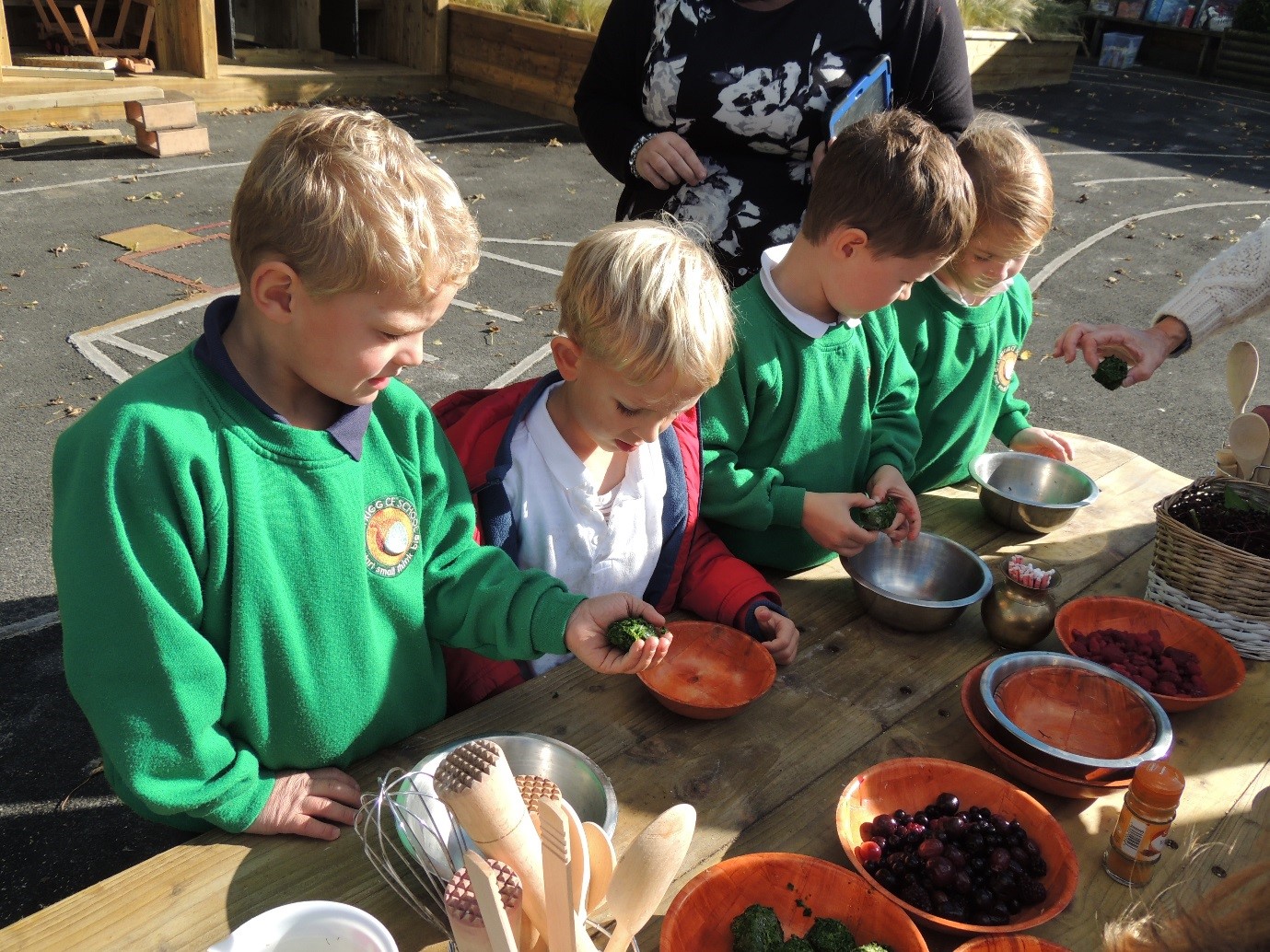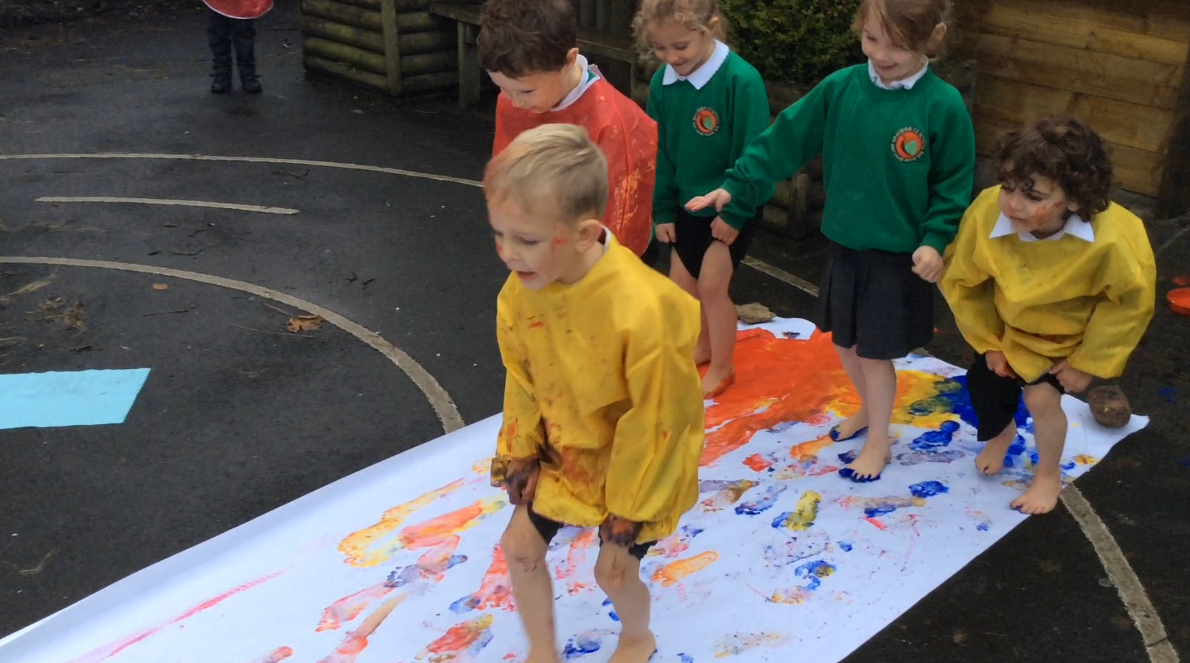An afternoon with the Acorns


I must start this blog by letting you all know I love teaching my Oaks class (years 3 to 6). They are incredibly special to me and of course I spend four days a week teaching them and I love to see them grow as people. I love it when they grasp a new concept or achieve something they have struggled with. However, this blog is about my afternoon each week in the Acorns class. It most definitely does not belittle how wonderful my own class of Oaks are - I adore the days I spend with them as much as I adore my afternoon each week in the Acorns. Both classes are special, but it is my afternoon each week in the Acorns that keeps me sane as a school leader.
I genuinely think it should be made compulsory for every head teacher to spend time in their EYFS class/unit. In fact, if I were ever minister for education, I think this would be the first law I would make. I also think it has to be a proper EYFS experience with continuous provision, not going in and singing with them or doing a one off lesson.
I spend every Thursday afternoon with the Acorns, although on alternate weeks the class is slightly reduced as the year two children work with our resident artist on this afternoon. I am sure it is my time with these fabulous little people that drives me to make some of my best decisions and most definitely leads to some of my best teaching in the Oaks. I don’t think you’d find a more honest group of critics. When your teaching is great, you’ll know because they’ll be completely immersed in their learning, but if you get it wrong they’ll let you know, they keep you on your toes. Activities you’ve spent hours planning won’t always interest them and teaching the EYFS makes you respond to what is around you, to pull learning from magical but unexpected moments and at times, just to stop to catch your breath and say WOW.

Last Thursday I had the most wonderful afternoon. When I go into the Acorns, they are obsessed with me bringing something from the Oaks. So I always set up a provocation table. I set it up with either things from the Oaks class, things that are special to me or just something interesting. This week they begged me to bring in the grown up paints (the Oaks paints). I took the acorns into my art area at lunchtime to check which paints they wanted and to my surprise it was plain old ready mixed paint - evidently they are in different bottles from their own and they presumed they were different.
I took the paints through although, as I knew they had been excited by colours and rainbows, I decided to limit the paint choice to primary colours to start with. I wondered how they would cope with colour mixing. I put nothing on the provocation table except the 3 paint bottles and lots of different paint trays and various sized roles of paper. As usual, after lunch they all went straight to this area. I was very intrigued to see if they would play with it differently because it was “grown-up paint”. They quickly noticed there were no brushes. After much discussion (and lots of disappointed looks towards me), one child went and got a balloon from the creative area - this week they’ve all been trying to make balloons to take things to the man in the moon for Christmas (inspired by the John Lewis advert). She poured out some paint, and stuck the balloon in it. The little boy next to her quickly rolled out the paper. She dropped the balloon on the paper and there was an excited squeal around the classroom. The next thing the children were all outside with balloons and rolls of paper - balloon printing - dipping their balloons in more than one colour to make a new colour. They rolled a huge roll of paper the full length of our lovely outdoor classroom. One young man was fascinated with the way the paper rolled (there is quite a gradient on our playground). Along with two friends, he spent some time trying to roll it back. The problem solving involved in this was amazing, trying to make sure it didn’t go off to the side - trying to all roll at the same speed. Then they let it go again. Next we had dribbling balloons like footballs down the rolled out paper, then bowling, all the time shouting and chattering about the patterns they created.
The scientific understanding was incredible - trying to roll the paint covered balloons down the paper then up the paper, watching it come back when they rolled it up the hill. After a while there was a shout of “can we make a rainbow?” Six children working together making the colours they needed. They were working out what colours they could make, so everyone had a different colour, talking about the colours they had seen in the rainbow earlier that week. Eventually, when they each had a colour, they dipped their balloons and rolled them down the piece of paper - squealing excitedly. The squealing quickly trailed off to a rather disappointed “uh” as the balloon prints weren’t very impressive. A cheeky grin and the young lady who first dropped the balloon in the paint said “we can use our feet.” Five faces looked up at me hopefully and the sixth little person said “I’m not getting me feet muck up” in a broad Cumbrian accent - “I’ll get t’-i-pad and make a film of it.” He didn’t want to get paint on his feet but he still wanted to be part of this exciting moment. Trouser legs were rolled up, socks and shoes taken off and the primary colours were squirted at the top of the page. They mixed them with their feet (with me occasionally calling “careful not to slip”). Once colours were mixed, there was a huge count down and four children ran down the paper, leaving a trail of footprints behind them, the fifth little person ran delicately on her tip toes - giggling hysterically with tears of joy dripping down her cheeks.
Several buckets of warm soapy water and lots of wet wipes later, we were back in the classroom watching the film our little friend had made. Talking enthusiastically about the activity, my favourite comments came from two boys talking - “if we went up the paper would we roll back down like the balloons?” His friend’s response - “no, don’t be daft - the balloon rolls down ‘cos it can’t think.” I couldn’t resist asking why - “It just does what the ground does - we’ve got brains and muscles.”
It is comments like this that remind me why spending time in the Early Years is so important - not just to remind me of what is important, but also because this sort of learning wouldn’t be out of place in a key-stage 1 or 2 lesson. He was, after all, differentiating between a living animal and an inanimate object, but furthermore, he was making the connections between needing muscles to do something and a brain to control those muscles. Amazing learning came from this incidental session, but I wonder when the last time a lot of key-stage 2 children stood in paint and launched themselves running at high speed down a huge roll of paper? The Acorns never fail to remind me that the extraordinary can come from the ordinary when learning is grounded in very real experiences.
So every head should spend at least one afternoon a week the Early Years Classroom because:
- They keep you on your toes
- They will be your most honest critics
- They remind you that learning is most powerful when it is based in real experiences
- They will show you how to see the extraordinary in the ordinary
- It’s a great place to be
- Everyone should go home with paint/dough or something stuck in their hair once in a while!
I’m looking forward to next Thursday already, little people.
← back to the blog


